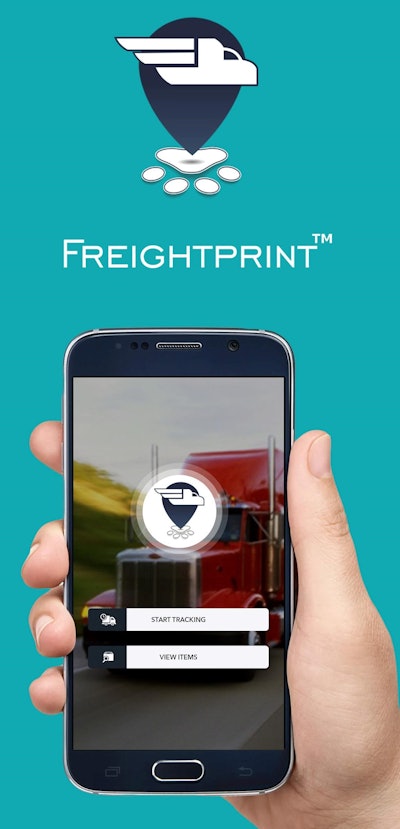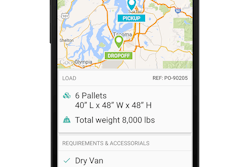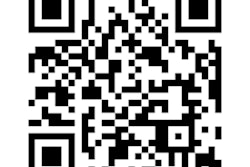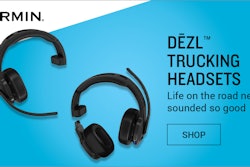The company FreightPrint is out with a smartphone app and tracking service that company founder Sam Titus says harnesses the GPS and cellular communication capabilities of smartphones in order to put tracking tools and service into the hands of independents and small fleets. In a freight world where more and more customers on either end of any load are wanting more from their carrier service providers when it comes to visibility, the company hopes its solution will be one to take hold among small carriers — rather than what’s been the case for many to date, with a strong presence among brokerages looking to do the same thing for their customers.
 The FreightPrint smartphone app is available for both iOS and Android smartphones. For full functionality for independents and/or small fleets, creating an account to manage loads via FreightPrint.com will be necessary.
The FreightPrint smartphone app is available for both iOS and Android smartphones. For full functionality for independents and/or small fleets, creating an account to manage loads via FreightPrint.com will be necessary.A variety of apps and other tools have been highlighted on this blog that either pitched themselves to independents for potential tracking use, or that showed potential for allowing customer self-service windows into a load’s location.
Titus says over recent years small businesses — both carriers and shippers — have largely not offered tracking as a service to customers simply believing “it’s too expensive, too complicated, or just too much hassle.” Legacy technologies that enable tracking can indeed be expensive, but today he’s right to note that it really doesn’t take a lot of investment to put it in place, provided you and/or your drivers are using smartphones along your route.
If you’re dealing with direct customers, a FreightPrint account allows you to create unique onetime and/or recurring movements via the web portal and dispatch the load to particular drivers utilizing the FreightPrint mobile app. When the load is dispatched, if everything is set up correctly, both driver and customer receive a notification of the dispatch. When the driver scans a unique QR code created to be associated with the load, or he/she enters his/her ID in the system, tracking then begins.
A similar set of processes then occurs at delivery and includes proof-of-delivery and signature-capture capabilities, and along the way customers can check in via the web, where they’ll find not an exact pinpoint location on a map of a driver’s phone but a display analogous to what consumers get utilizing the tracking services of parcel-delivery giants like UPS and FedEx, or indeed the U.S. Postal Service. The last known location of the freight is shown simply by city/state.
Launched two years ago, FreightPrint’s users today are most 1-2-truck fleets who see value in increasing visibility to customers. Titus says he hears often that the service “makes them look as if they are bigger than they are” to their shippers/receivers, and some charge customers a small premium — say, $10 per load — to customers to utilize tracking. FreightPrint, like some similar tools before it, operates under a pay-per-use model for carriers — 99 cents per load tracked. If you don’t use it, you don’t pay for it. (Titus noted some special volume pricing for Channel 19 readers who may ultimately try out the service — use “overdrive” promo code, he says, through December 31 this year if so.)
“There are a handful of other tools out there, and they all offer a different approach to the same problem” of multi-party load visibility, Titus says. “Our top comments from our customers have to do with how quickly they go from zero to 60 – sign up, download the app, create the first load and start tracking.”
Simplicity guides the company’s philosophy around the service, he adds. “We don’t have a whole lot of features – with a lot of these logistics apps you have to buy into a lot of other services and then you can offer tracking. That’s all we do, and we want to streamline this process. We can add more features on a per-request basis.”










